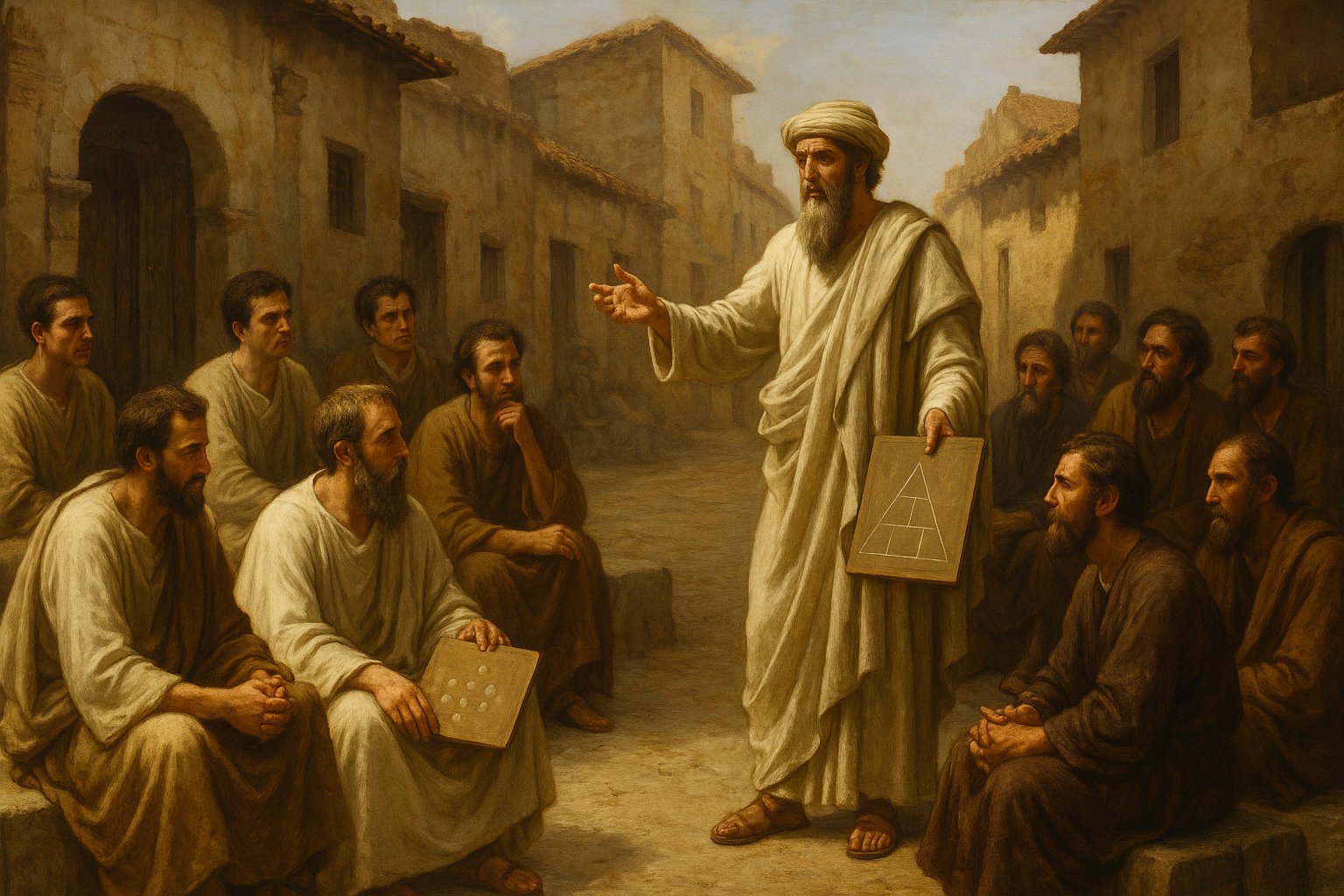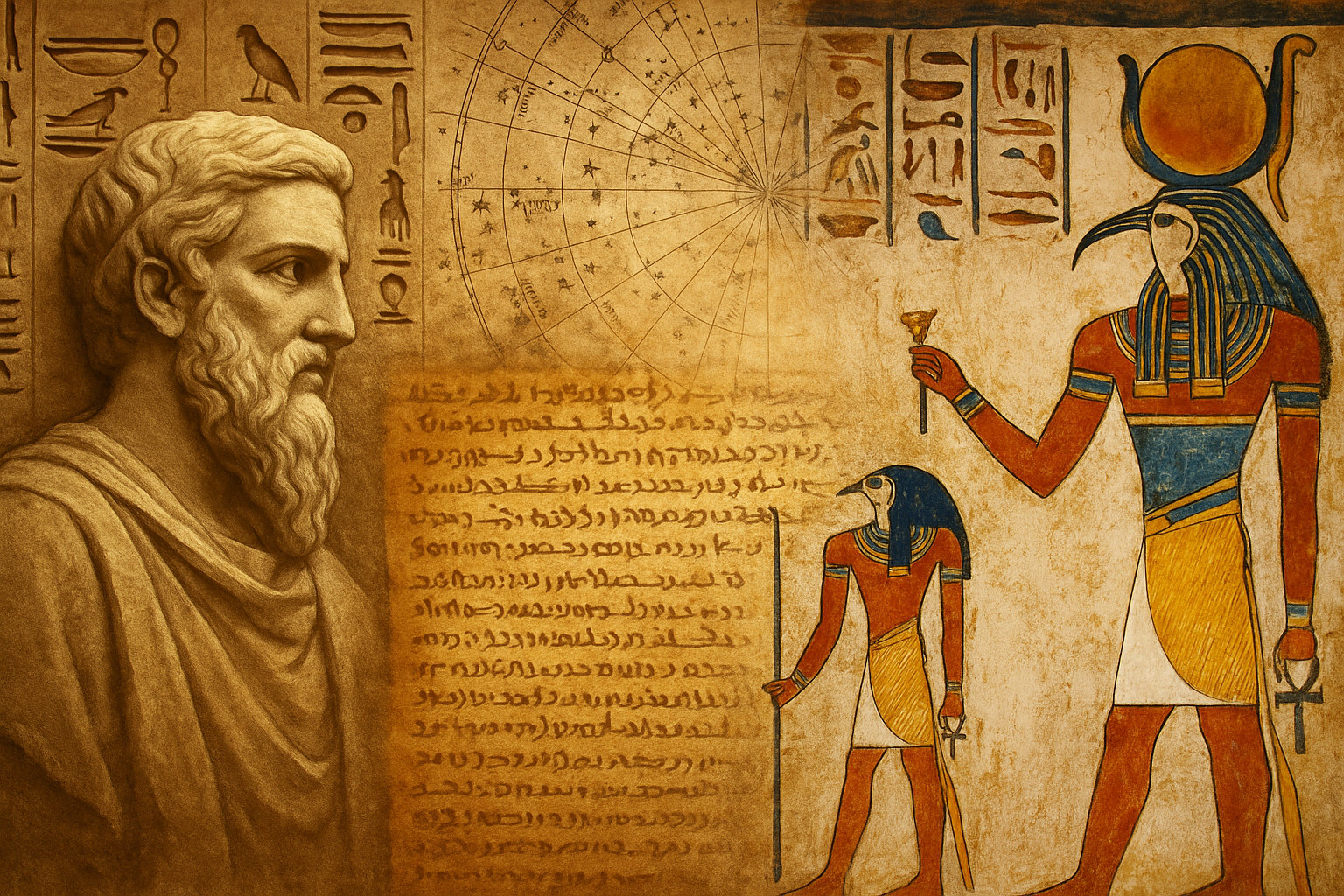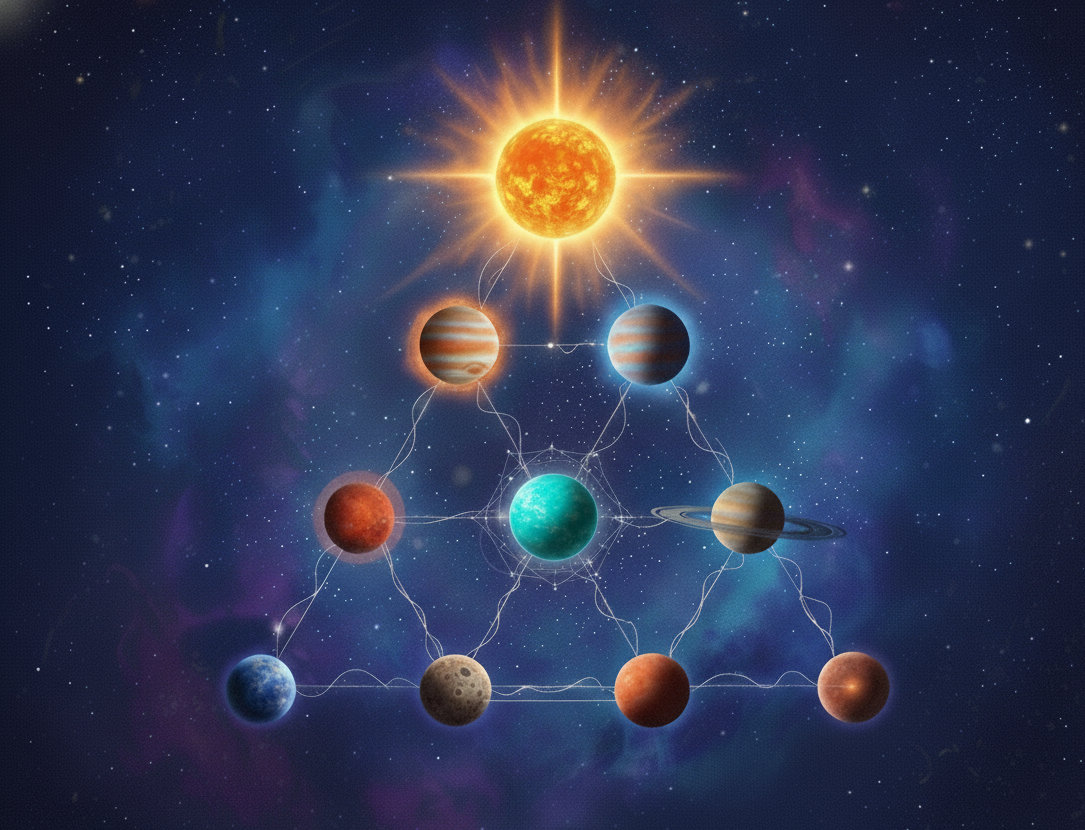A philosopher who said numbers were the language of the universe drew together a secretive group of people in the dusty streets of ancient Greece. Pythagoras of Samos (c. 570–495 BCE) started more than just a math school. He started a mystical brotherhood that combined science, philosophy, music, and spiritual discipline into a new way of life.

The Sacred Journey: Egypt, Babylon, and More
Delphic oracles predicted that Pythagoras, who was born on Samos around 570 BCE, would do great things for humanity. He saw mathematical patterns in nature at a young age, such as the spirals of shells, the symmetry of petals, and the arrangements of stars. This made him believe that cosmic harmony is shown through number and proportion.
Around 530 BCE, Pythagoras left his home to escape the tyranny of Polycrates and traveled a lot in search of ancient wisdom. In Egypt, he had to wait a year outside temples without saying anything before the priests would let him be a student. He learned about sacred geometry, numerology, and the idea of metempsychosis, which is the idea that souls can be reborn. Egyptian priests told him that numbers have a qualitative essence: 1 stands for unity, 2 for duality and balance, 3 for harmony, 4 for the material world and the four elements.

Pythagoras learned about astronomy and the sexagesimal (base-60) system for measuring time and angles in Babylon. He learned gematria from Phoenician sages. This is the practice of giving letters numbers to find hidden meanings in words and holy texts. Some sources say he went to India, where beliefs in vegetarianism and reincarnation were similar to later Pythagorean practices.
The Brotherhood of Croton: A Monastic Math Community
Pythagoras went back to Magna Graecia around 530 BCE and settled in Croton (now Calabria, Italy). There, he started his revolutionary school. This was not a normal school; it was a philosophical monastery where members shared everything, lived together, and made sacred vows to Pythagoras and each other.
Structure and Hierarchical Order
There were two distinct levels of members in the order:
Akousmatikoi ("listeners"): Newcomers had to spend three years in complete silence, memorizing Pythagoras' teachings without question. This was meant to help them learn self-discipline, control their impulses, and become more aware of themselves. They were required to observe and absorb the teachings passively before being permitted to engage in philosophical discourse.
Mathematikoi ("learners"): Advanced initiates gained access to profound mysteries, including number symbolism, sacred geometry, musical harmonics, astronomy, and the doctrine of cosmic order. Only after proving their dedication and mastering the foundational teachings could students progress to this inner circle.
Every day was a strict ritual:
- Morning meditations with music to clear the mind for the day's problems
- Afternoon talks about math, philosophy, ethics, and being good
- Evening self-evaluation: "What did I do today? What did I do? What responsibilities did I fail to fulfill?"
- A vegetarian diet, based on the belief in the transmigration of souls, because eating meat was thought to be a form of cannibalism since animals could hold reincarnated human souls.
Members also stayed away from fava beans, which Pythagoras thought had the souls of the dead or disturbed spiritual breath.
The Sacred Tetractys: A Sign of Universal Perfection
The Tetractys were the most important part of Pythagorean mysticism. They were ten points arranged in four rows (1, 2, 3, 4) to make an equilateral triangle, which is the perfect number 10. This holy symbol held the secrets of the universe:
- Row 1 (1 point): Unity, the Monad, and no dimensions
- Row 2 (2 points): Duality, one dimension (a line)
- Row 3 (3 points): Harmony, two dimensions (a plane or triangle)
- Row 4 (4 points): Kosmos, a three-dimensional shape with four points

The four rows also stood for the four elements: earth, air, fire, and water, as well as the musica universalis (cosmic harmony). Members took their most sacred oath by the Tetractys, saying, "I swear by him who gave Tetractys to our souls, which contains the source and root of eternal nature." It was thought to be the worst betrayal to tell anyone outside the brotherhood about this oath.
The Symphony of the Spheres: The Music of the Spheres
Pythagoras found that musical intervals are the same as mathematical ratios: an octave is 2:1, a perfect fifth is 3:2, and a perfect fourth is 4:3. From this, he came up with his revolutionary idea: celestial bodies make inaudible harmonies based on how far away and fast they are moving in their orbits, making a cosmic symphony.
"There is geometry in the humming of the strings, there is music in the spacing of the spheres."
- Pythagoras
Pythagoras said that people can't hear this "music of the spheres" because it has been playing non-stop since birth, so there is no silence to contrast it with. One may only achieve attunement to this cosmic harmony through spiritual purification and meditation. The theory, although empirically unverifiable, had a profound impact on Plato, Johannes Kepler (who formulated laws of planetary motion), and the scientific revolution.
The Legacy of Math and Philosophy
The Pythagorean theorem was known in Babylon and India before Pythagoras or his followers organized and proved it. It became the basis for geometry. The brotherhood looked into more than just math:
- Perfect numbers (like 28 = 1 + 2 + 4 + 7 + 14)
- Geometric algebra that combines Babylonian and Greek methods
- The golden ratio and the pentagram as symbols
- Platonic solids - tetrahedron, cube, and dodecahedron
Pythagoras said that "all is number," which means that math rules everything that exists. This philosophy foreshadows the dependence of contemporary physics on mathematical frameworks and even implies similarities to computational theories of reality, which posit that everything can be reduced to binary code (zeros and ones).
"All is number. The universe is a harmony of mathematical proportions, and through understanding these numbers, we understand the divine order of creation."
- Attributed to Pythagoras
The Violent End and Lasting Impact
Around 508–510 BCE, political tensions reached a breaking point when Kylon, a rich Crotoniate nobleman who Pythagoras had turned down because of his bad character, sparked a violent reaction. Kylon stoked people's fear of the secretive brotherhood by saying that the Pythagoreans were planning to hurt them. Pythagorean meeting houses were set on fire by mobs all over Magna Graecia. Many members died in the flames or were stabbed while trying to escape.
Pythagoras fled to Metapontum, where stories differ: some say he starved to death after 40 days in the Temple of the Muses; others say he killed himself because he was so sad about the destruction of his community. The surviving members spread Pythagorean ideas to Plato, who wrote about ideal forms in a way that is similar to Pythagorean number mysticism.
Pythagoras' ideas came back during the Renaissance and had a big impact on Copernicus, Kepler, Galileo, and Newton. These ideas laid the groundwork for modern science's belief that the universe works according to mathematical laws. The Pythagorean theorem is still an important part of education around the world, and musical theory still uses his ratios. New Age groups are also bringing back his mystical numerology.
Conclusion: The Hermetic Principle Persists
Pythagoras' combination of math, music, astronomy, and spirituality was an example of the hermetic saying "as above, so below," which means that understanding creation reveals the Creator. His claim that "everything is number" strikes a chord in our digital age, where virtual realities are made up of only binary sequences. Pythagoras may have perceived a profound truth: the universe could be a mathematical construct, a cosmic code awaiting interpretation by those prepared to pursue knowledge through both rationality and mysticism.